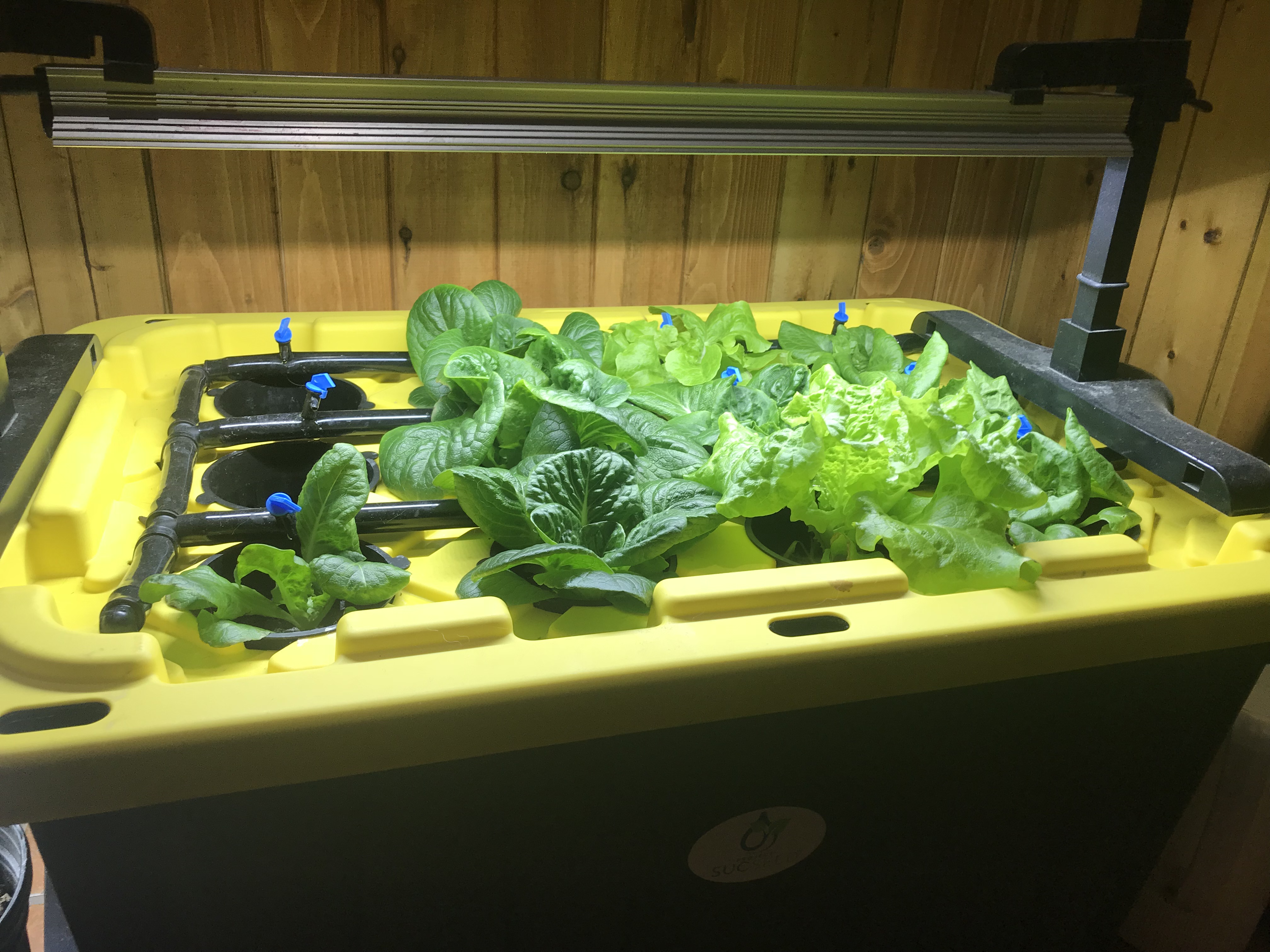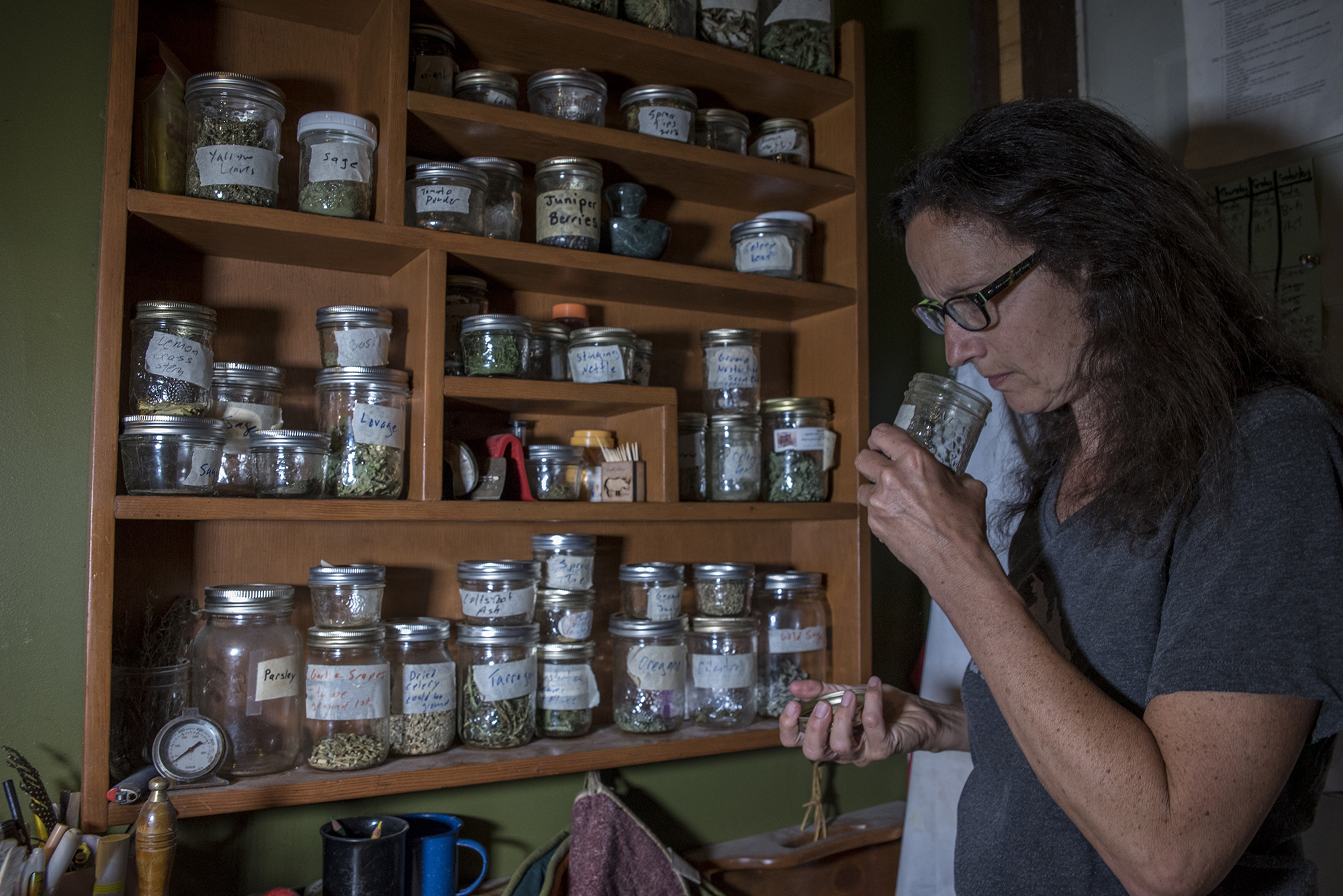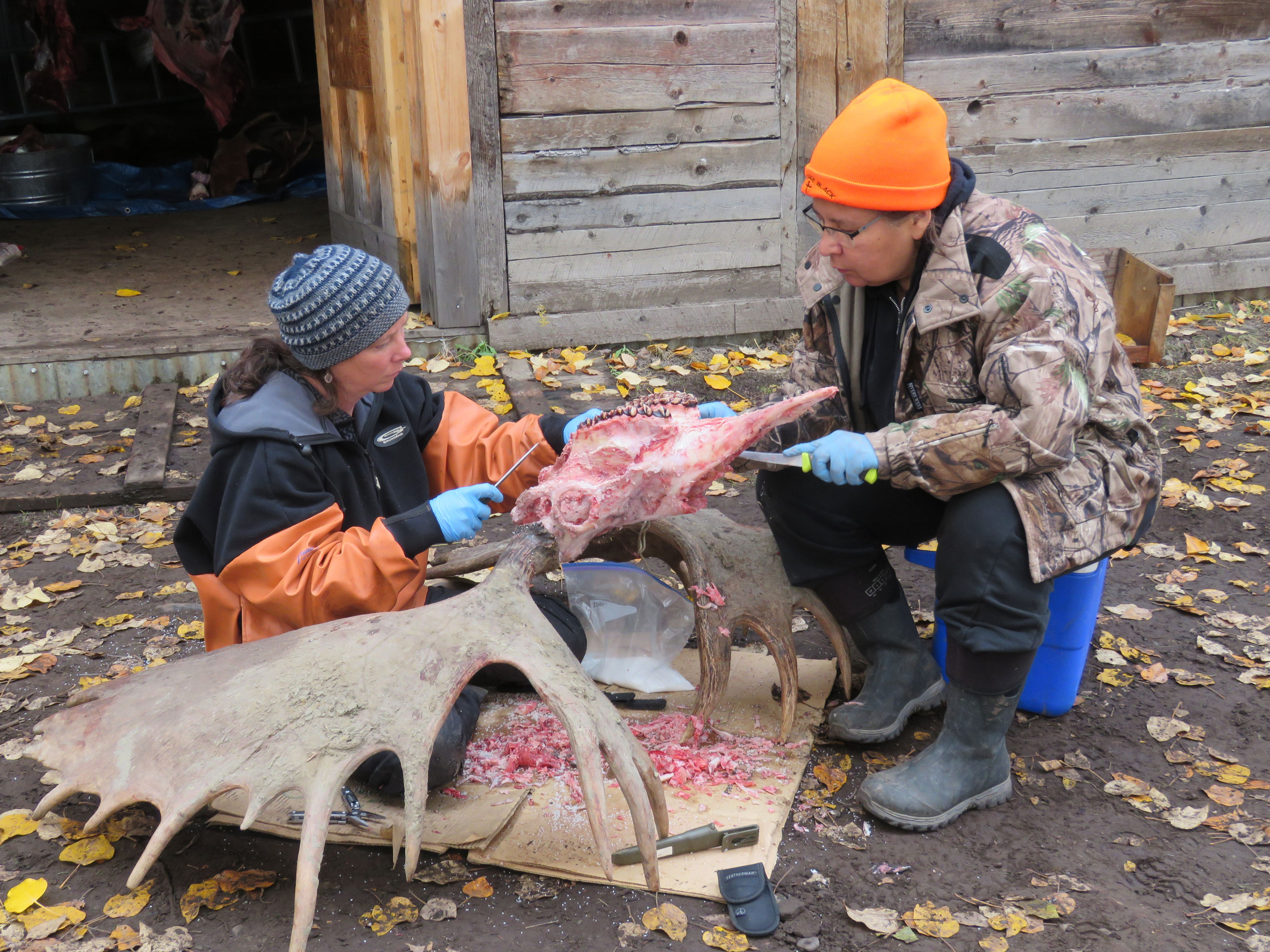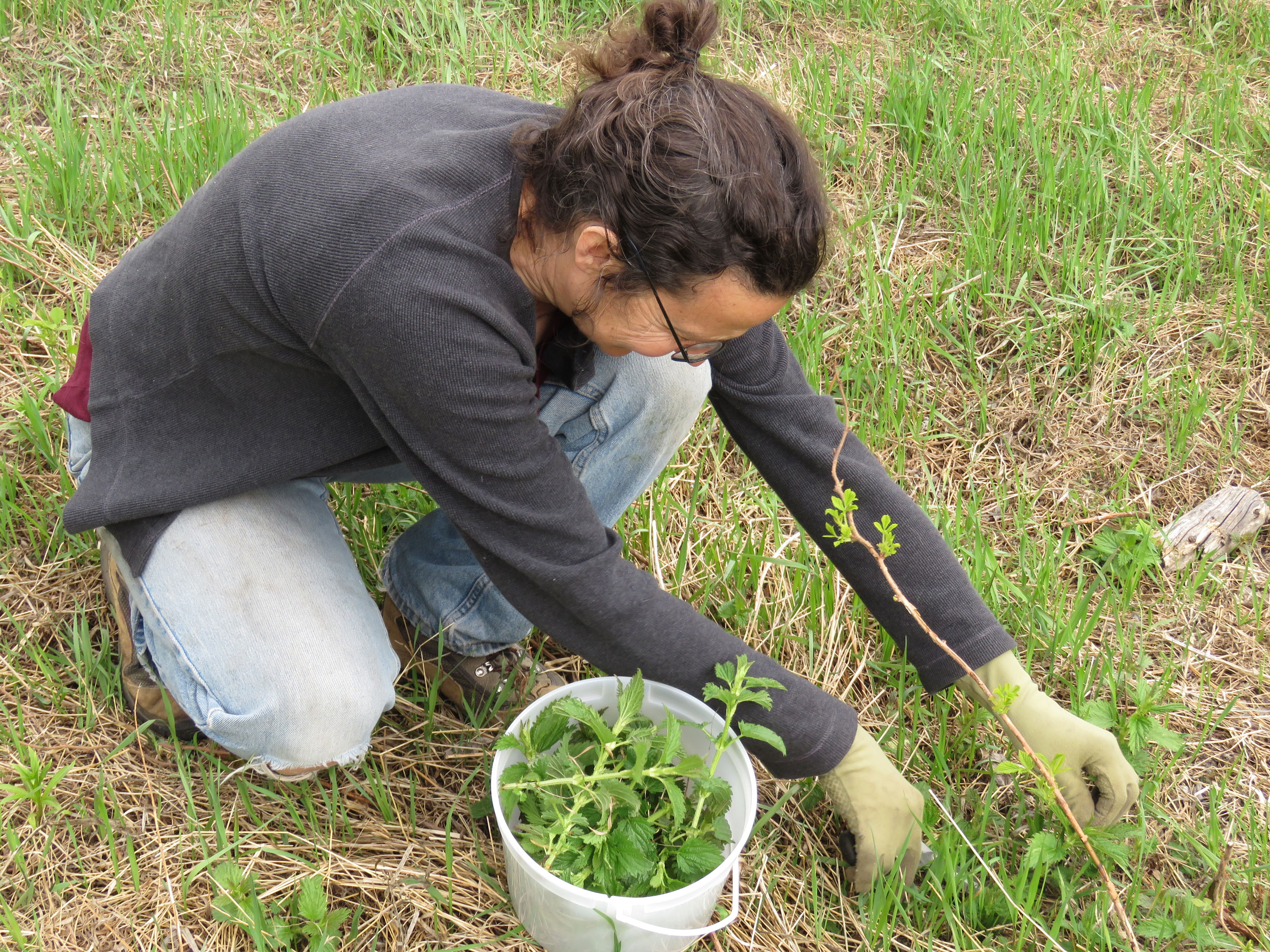It’s Ridiculously Hard to Eat Local in the Yukon
Credit to Author: Lori Fox| Date: Wed, 30 Jan 2019 14:53:31 +0000
“Bread,” says Suzanne Crocker, “bread was definitely one of the hardest. Bread that was rock-hard, bread that was gummy, bread that was burnt or so sour it was inedible.”
Crocker is a spry, middle-aged woman with tough eyes and a kind face who talks methodically but animatedly about her year spent eating only local food in Canada’s North. “Still,” she says, looking across the big, family-style table that dominates her kitchen. “I didn’t really miss a lot of foods. Avocado, tea, chocolate, oranges? Surprisingly not… I was surprised at how adaptable I was.”
Crocker was baking bread with only rye flour, a grain that is hard to work with without an additional wheat for gluten development, as any baker will tell you. It is one of the few grains that can be grown in any quantity in Dawson City, Yukon, where Crocker lives. This time of year in Dawson, when you look out over the countryside everything is enveloped in a perfect, bitter white: the trees and roads, the frozen rivers and fields, the town itself. A person who has never lived here before would be forgiven for believing that even if there was ever a time when something had grown in this frozen waste, it isn’t growing now and probably never will again.
Which is why Crocker’s project, First We Eat, in which she and her family lived a year on only food which could be “fished, foraged, hunted or grown” in Dawson is all the more remarkable. Crocker began the project July 31, 2017 and successfully completed it August 1, 2018. She is currently making a documentary about it, which she hopes to release in the fall.
This is actually a much more impressive—and complex—challenge than you might realize. Crocker is married to her husband, Gerard—a large man of the warm, genuine sort—and the couple have three teenage children, all of whom she “conscripted” (to use her own terminology) into the project, more or less willingly. Feeding five people—especially growing teenagers with “insatiable appetites”—was “a serious challenge” she says, but the kids had a slight out in terms of what they could and could not eat; whatever they ate outside the house was their business, but whatever she cooked for them or kept in the house would remain within the perimeters of the project. Still, she says, there were times when keeping her hungry kids fed “was a full time job in and of itself” and definitely moments when she felt overwhelmed and wanted to quit full stop.
“There were times when there just weren’t enough hours in the day, when I was just in tears,” she says.

Although Dawson has some of the best soil and growing conditions in the Yukon, the weather is still Northern (which typically means quite cool) and subject to extended periods of daylight exceeding 20 hours or more, which actually causes plants to bolt instead of continuing to grow. The growing season is short and things typically don’t thaw out until the end of May and freeze can strike anywhere from late August to October, which makes gardening, while possible, less of a hobby and more of a highly specialized, adaptive skill.
Ninety-seven percent of the food consumed in Dawson is trucked in, says Crocker. This means that food comes in up the Alaska and Klondike Highways: a steak from a cow slaughtered in Edmonton has to travel 2,500 km to get to Dawson; a head of broccoli from California must traverse 4,500 km; and a tomato on a sojourn from Mexico 6,700 km. This not only has an absurd carbon foot and makes food extra expensive, makes our food substantially less tasty and healthy.

Moreover, we take the food supply systems around us for granted; most grocery stores, Northern or otherwise, typically only stock two to three days worth of food at a time, Crocker says. Even though, to the eye of a shopper, the supply seems inexhaustible, if the road were cut off, Dawsonites who didn’t know how to eat what was around them would be in serious trouble.
Our diets—and the way we cook—is comprised of essential food components such as salt, sugar, fat, grains, vegetables, and proteins. Typically in a North American diet, that means iodized table salt, cane sugar, a processed oil like olive, corn or canola, a carbohydrate like wheat pasta or rice, and some kind of factory farmed animal, like commercial beef or chicken, or, if a vegetarian, tofu or other bean-based protein source. That meant that in addition to a lot of luxuries we take for granted—coffee, black pepper, almonds, oranges—being forbidden, so were most things we consider staples, because they can’t be produced or made from locally-sourced ingredients.
So, given what was available, what did a daily meal plan look like for Crocker’s household? A lot of meat, eggs and local vegetables and foraged plants.
Breakfast, Crocker says, was the easiest meal to make, and was usually comprised of eggs (of which Crocker and her family ate four dozen a week) and a side, for example, a fried potato cake. Lunch was often left overs, homemade cheese, such as goat milk chevre and crackers, or home-dried meats. Dinner would be game meat, such as moose or chum salmon, or locally-raised pork, along with a root vegetable like potatoes.
“A moose roast seasoned with garlic and haskaps is to die for,” says Crocker.

Fats—for cooking and for baking—were entirely animal-based, such as pork lard. Being a vegetarian or vegan on such a diet would be next to impossible. Crocker notes nearly every source of local protein comes from animals. With our relatively short growing season, cool temperatures and relatively low soil fertility, growing something like soy in quantity as a protein replacement simply isn’t feasible.
There was also no caffeine—black and green tea and coffee obviously don’t grow in Dawson—and no wine, liquor or beer. Alcohol could possibly have been brewed from local sources, but they were so busy it didn’t happen she says, although she did make kombucha, which has a very low alcohol content.
White sugar was replaced with natural sweeteners, such as a locally-raised honey, birch syrup and sugar beet syrup, which Crocker made herself by reducing off the water she cooked beets in. You can make granular beet sugar too—some sorts of baked goods really require granular sugar, she says—but the process was much more time consuming.
One of the biggest changes to her family’s diet during the project is one we so take for granted you might not even have considered it at all—salt. Dawson is landlocked, so sea salt was out of the question, and it’s not something you can just go out and readily dig out of the ground, so Crocker went without.
“Initially things tasted quite bland,” says Crocker. “Then, your palate starts to change and that blandness went away. The flavours of the foods themselves became quite accentuated and other things began to taste salty, even baked goods began to taste salty.”
Living without salt poses issues beyond how you season your steak; without salt, there’s no pickling, a critical form of food preservation in a climate which has such a limited growing season. She could freeze food, but she also made a lot of lacto-ferments.
Crocker—who was a family doctor before she was a filmmaker—says she noticed certain health benefits to the diet. She used to have trouble with high blood pressure, but when she went to an all-local diet, her blood pressure returned to a normal range and she was able to stop taking the medication she had been using to treat it. Her husband also lost a substantial amount of weight, at least in the beginning, probably partly, both note, from removing beer from his diet.
“Where we live, by the time food gets to us (it) loses much of its nutritional value,” she says. “Nothing beats it when it’s fresh and local.”

While her husband hunts and fishes, neither of them are farmers or foragers; there was a tremendous learning curve, and a ton of extra time and energy spent learning how to cook with what was available locally. She owes a huge debt, she notes, to local “knowledge holders,” including farmers and supportive members of the Tr’ondëk Hwëch’in First Nation, who have lived—and eaten off of—the land around Dawson for time out of mind and also have a community teaching farm just outside of Dawson. The project introduced her to a lot of local farmers and people who had skills to share, leaving her feeling more connected to her community.
“I definitely didn’t do this on my own,” she says. “The whole community is really rallying around local food.”
Although the project is over, Crocker continues to use many of the local ingredients, although her kids and husband have gleefully returned to their previous diet, for the most part (in his blog posts regarding the experience, Gerard refers to the project as ‘The Program’, a nomenclature that invokes a 1984-esque vibe of restriction and surveillance).
In terms of cost, Crocker says she doesn’t know how much it cost her family to live this way, but that she didn’t notice any extra financial strain from the project. In terms of time, however, it was definitely more expensive—it’s infinitely more time consuming. For example, to go out and pick a pail of wild cranberries—a painstaking process—then to buy a pint of California strawberries, or to hand-make a loaf of 100 percent rye (rye can be grown in the North while wheat cannot) sourdough bread than to buy a loaf of pre-sliced at the store. That’s not necessarily a bad thing, she says—foraging and gardening are physical exercise, and cooking “gives you time” to think and be.
“Part of the reason we’ve come to the place we’ve come to (as a culture) is because we believe we need all this time-saving devices, but we just always work until we sleep,” she says.
Curiously, a flashpoint for conflict within her family during the project seems to be innocent ice cream, which Crocker made from scratch and by hand, a time-devouring process. In a situation where you can just go out and but two litres of Chapmans chocolate ripple, eating a big bowl of it isn’t a big deal, but when it is made with all-local ingredients and you’re churning it by hand, someone just pounding back a bowl feels extravagant.
“When you put so much time and work into everything you eat, you appreciate every bite,” she says.
More about Crocker’s project, including a list of Dawson farmers and food producers, is available on her website.
Follow Lori on Twitter.